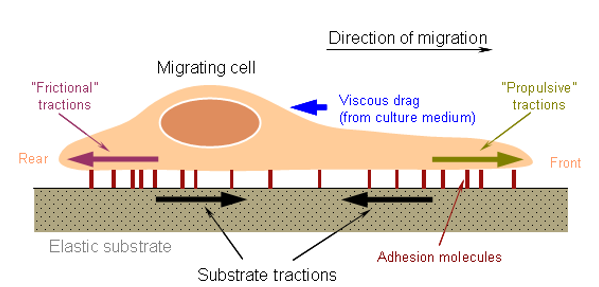Cell migration is a fundamental process that involves the translation of cells from one location to another by adopting different motility modes, such as mesenchymal, amoeboid or collective migration. Cell migration is essential for the development and maintenance of multicellular organisms. It also plays a key role in cell migration-mediated tissue organization, organogenesis and homeostasis, especially in the immune response and cancer spreading which are the hotspots of clinical studies recently. Stimuli such as chemokines, cytokines and growth factors, can promote cell migration by activating the related signaling pathways that control organization of the actin cytoskeleton and adhesion complexes. The actin cytoskeleton is generally regarded as providing the main force required for cell migration. Migrating cells are polarized, and at the front, extension of lamellipodia is driven by dynamics polymerization of actin, pushing the plasma membrane forward. Based on the different mechanisms of cell migration, there are two very distinct migration scenarios which are crawling motion and blebbing motility.
 Figure 1. The diagram of Cell Migration
Figure 1. The diagram of Cell Migration
Cell migration is regulated by the relevant signaling molecules and the process is complicated. It is far from failsafe and abnormal migrations may occur, which may have serious consequences, including intellectual disability, vascular disease, tumor formation and metastasis. The most common alterations are those that impair cell migration which can cause brain and heart abnormalities and defective lymphopoiesis. In homeostasis, migratory impairment delays would impair the immune response. Thus, the understanding of the mechanism is essential to develop the novel therapeutic strategies for controlling such as invasive tumor cells. In a series of recent works, some new research methods of cell motility have been established. The behavioral or shape changes of a cell bear information about the underlying mechanism are studied. The underlying biophysical, biochemical and signaling pathways which are of paramount importance have been widely studied. The analysis of live cell image sequences can be used to determine the physical features and material properties of the cells and make further inferences about the molecular structures, dynamics and processes within the cells, such as the actin network, microdomains, chemotaxis, adhesion and retrograde flow.
Online Inquiry